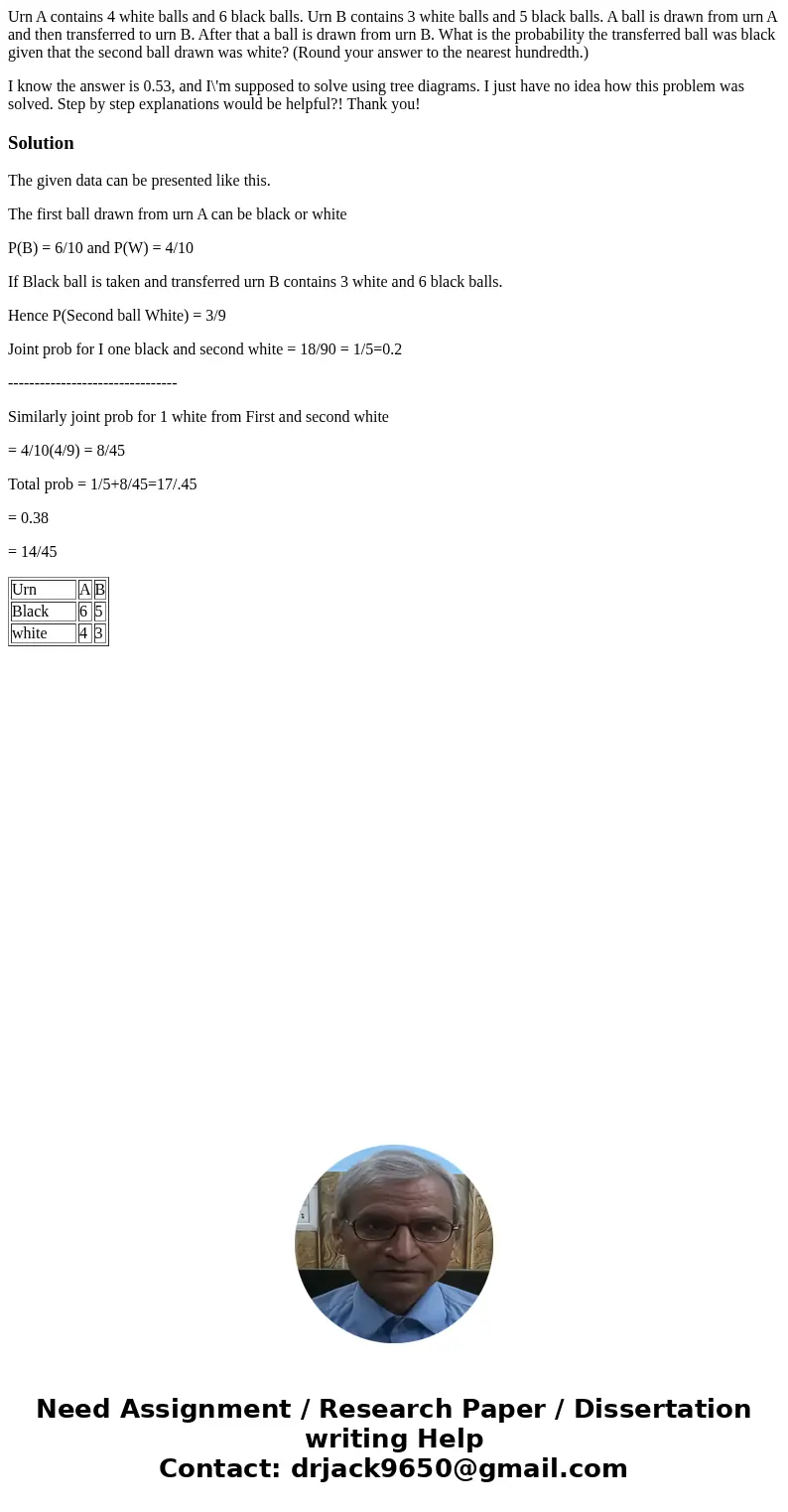Urn A contains 4 white balls and 6 black balls Urn B contain
Urn A contains 4 white balls and 6 black balls. Urn B contains 3 white balls and 5 black balls. A ball is drawn from urn A and then transferred to urn B. After that a ball is drawn from urn B. What is the probability the transferred ball was black given that the second ball drawn was white? (Round your answer to the nearest hundredth.)
I know the answer is 0.53, and I\'m supposed to solve using tree diagrams. I just have no idea how this problem was solved. Step by step explanations would be helpful?! Thank you!
Solution
The given data can be presented like this.
The first ball drawn from urn A can be black or white
P(B) = 6/10 and P(W) = 4/10
If Black ball is taken and transferred urn B contains 3 white and 6 black balls.
Hence P(Second ball White) = 3/9
Joint prob for I one black and second white = 18/90 = 1/5=0.2
--------------------------------
Similarly joint prob for 1 white from First and second white
= 4/10(4/9) = 8/45
Total prob = 1/5+8/45=17/.45
= 0.38
= 14/45
| Urn | A | B |
| Black | 6 | 5 |
| white | 4 | 3 |

 Homework Sourse
Homework Sourse